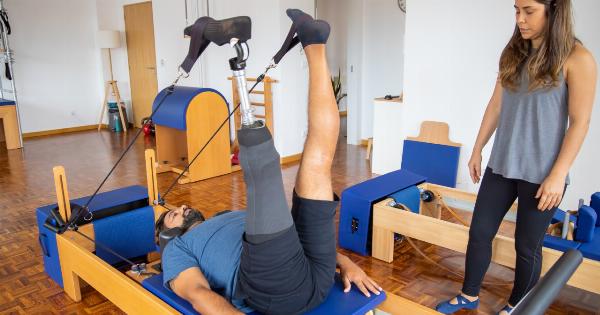Osteoporosis is a prevalent bone disease that affects millions of individuals worldwide, particularly in older adults.
This condition leads to a decrease in bone density and an increased risk of fractures, which can significantly impact a person’s quality of life. Therefore, it is crucial to implement interventions that focus on fracture prevention to mitigate the effects of osteoporosis. One such intervention that has gained popularity in recent years is circuit training.
Understanding Osteoporosis
Osteoporosis is a skeletal disorder characterized by a decrease in bone density and deterioration of bone microarchitecture, resulting in an increased risk of fractures.
It commonly affects postmenopausal women due to hormonal changes that occur during this period, but it can also affect men and individuals of all ages. Osteoporotic fractures most commonly occur in the spine, hips, and wrists, causing pain, disability, and a decline in overall well-being.
The Role of Exercise in Osteoporosis Management
Exercise has long been recognized as a key component in the management of osteoporosis. Regular physical activity helps to improve bone strength, muscle strength, balance, and coordination, all of which are crucial in fracture prevention.
Various forms of exercise, including weight-bearing, resistance training, and impact-loading activities, have shown significant benefits in reducing the risk of fractures in individuals with osteoporosis.
What is Circuit Training?
Circuit training is a form of exercise that combines cardiovascular activities with strength training exercises. It involves performing a series of exercises targeting different muscle groups in quick succession, with minimal rest in between.
This type of training provides a comprehensive workout for both the cardiovascular and musculoskeletal systems, making it an excellent option for individuals with osteoporosis.
The Benefits of Circuit Training in Osteoporosis
Circuit training offers several advantages that make it an effective intervention in the prevention of fractures among individuals with osteoporosis:.
1. Increased Muscular Strength and Bone Density
Resistance training is an integral component of circuit training. By incorporating weight-bearing exercises, such as squats, lunges, and push-ups, circuit training helps to increase muscular strength and improve bone mineral density.
Strong muscles and bones provide better support and protection against fractures, reducing the risk of injury.
2. Improved Balance and Coordination
Balance and coordination exercises are often included in circuit training routines. These exercises, such as single-leg stands and lateral movements, challenge the body’s stability and proprioceptive abilities.
By enhancing balance and coordination, circuit training can reduce the risk of falls, which is a common cause of fractures in individuals with osteoporosis.
3. Enhanced Cardiovascular Fitness
Circuit training incorporates cardiovascular activities such as jogging, jumping jacks, or cycling between strength training exercises. This increases heart rate and improves cardiovascular fitness, which is essential for overall health and well-being.
Individuals with strong cardiovascular fitness are better equipped to perform daily activities and reduce the risk of fractures caused by physical exertion or fatigue.
4. Convenience and Time Efficiency
Circuit training is a time-efficient workout option that can be easily modified to suit individual needs and preferences. It can be performed at home, in a gym, or outdoors, with minimal equipment required.
The flexibility and adaptability of circuit training make it a convenient choice for individuals with osteoporosis who may have limitations or prefer to exercise in their own environment.
5. Social Engagement and Motivation
Circuit training can be performed individually or in a group setting, offering opportunities for social engagement and motivation.
Group circuit training classes encourage camaraderie, support, and friendly competition, which can positively impact adherence to exercise programs. Improved motivation and enjoyment of exercise lead to long-term adherence, ultimately resulting in better fracture prevention outcomes.
Implementing Circuit Training Safely
While circuit training offers numerous benefits, it is crucial to implement it safely, especially for individuals with osteoporosis. Here are some guidelines to consider:.
1. Seek Professional Guidance
If you have osteoporosis or any other medical condition, it is advisable to consult with a healthcare professional or qualified fitness trainer before starting a circuit training program.
They can provide individualized recommendations based on your health status and help tailor the exercises to your specific needs.
2. Focus on Proper Technique
Correct form and technique are vital in preventing injuries during circuit training. Ensure you understand and practice proper form for each exercise to minimize the risk of accidents or strains.
If needed, seek guidance from a fitness professional to ensure you are performing the exercises correctly.
3. Gradually Increase Intensity
Start with lower-intensity exercises and gradually increase the difficulty as you build strength and confidence. Gradual progression allows your body to adapt and reduces the risk of overexertion or injury.
Listen to your body and adjust the intensity and duration of each exercise according to your comfort level.
4. Consider Low-Impact Options
If you have severe osteoporosis or joint issues, consider modifying certain exercises to lower impact alternatives. For example, replace high-impact movements like jumping with gentler options like marching in place.
This can help protect your joints while still providing the benefits of circuit training.
Conclusion
Circuit training is a valuable intervention in the prevention of fractures among individuals with osteoporosis.
By combining cardiovascular activities with strength training exercises, it improves muscular strength, bone density, balance, and cardiovascular fitness. Furthermore, circuit training offers convenience, social engagement, and motivation, making it an enjoyable and sustainable exercise option.
However, it is essential to prioritize safety and seek professional guidance when implementing a circuit training program, particularly for individuals with osteoporosis.































